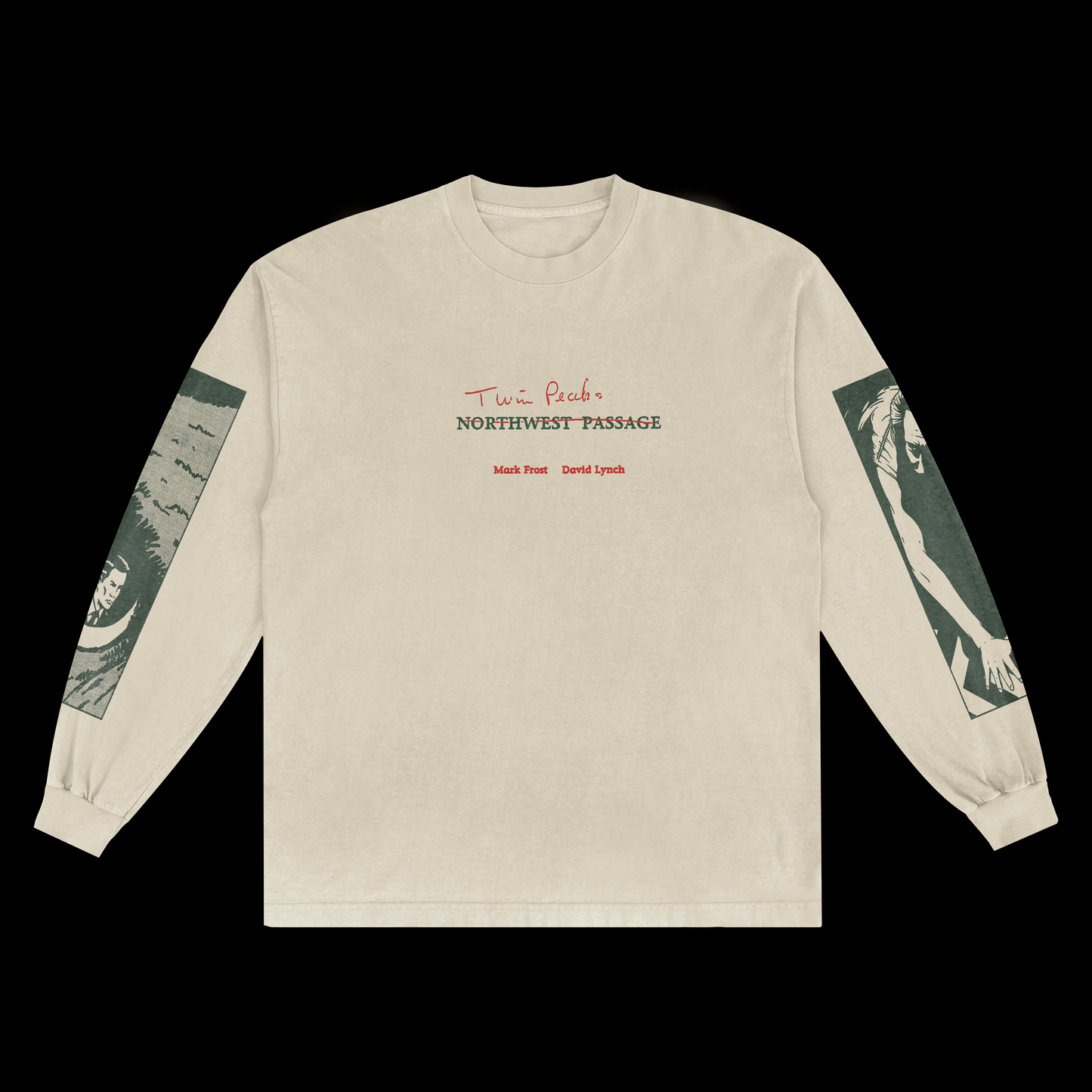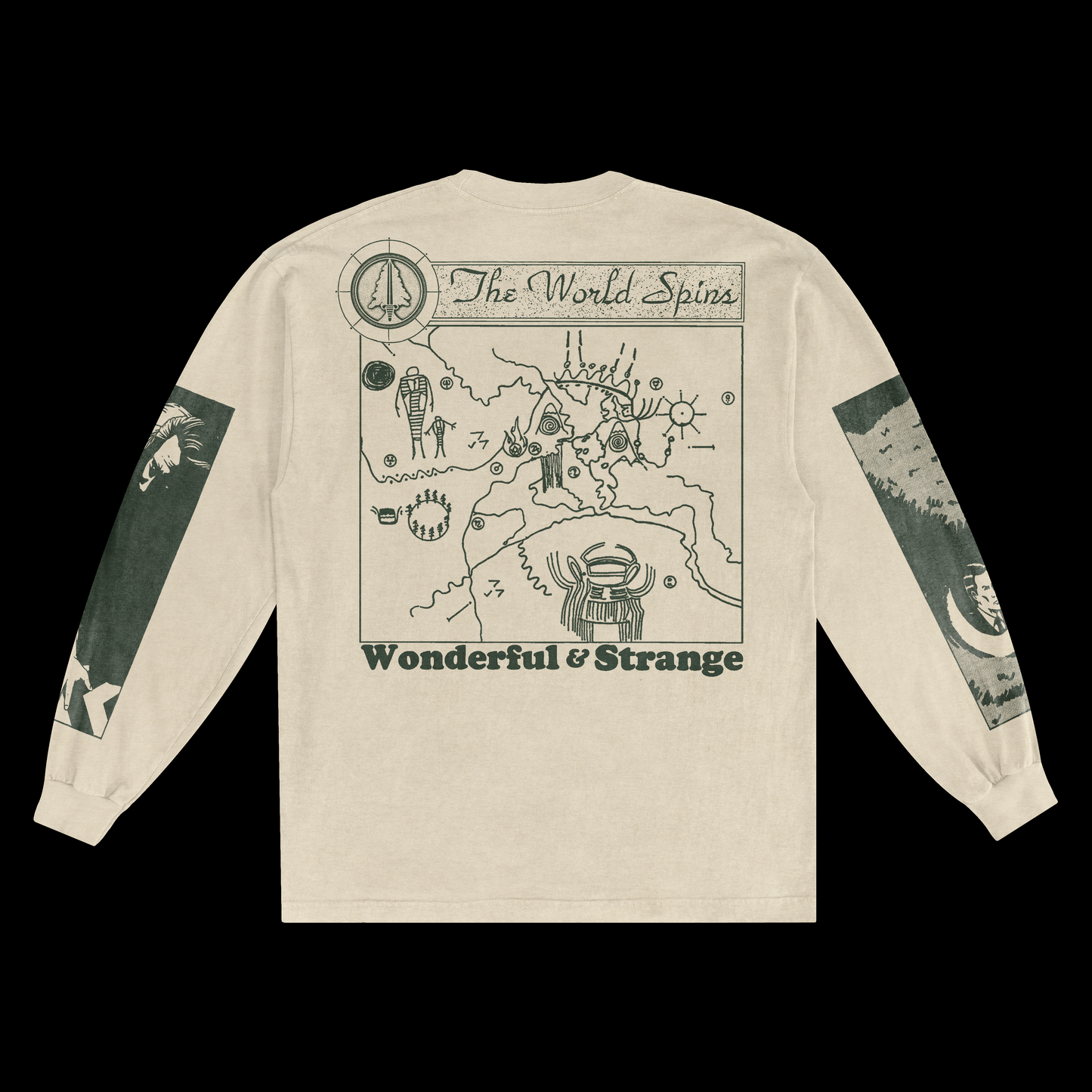Wonderful and Strange Longsleeve
Wonderful and Strange Longsleeve
Couldn't load pickup availability
ORDERS OPEN: 10/17/25
ORDERS CLOSE: 10/21/25
TO PRINT: 10/24/25
PRINTED ON LAA GD1807 CREAM LONGSLEEVE TEES.
ALL ITEMS TAKE BETWEEN 3-4 WEEKS TO PRODUCE AFTER THE ORDER PERIOD ENDS. You will always receive your item unless otherwise contacted. All items are final sale. We are not responsible for lost, stolen, or misplaced packages.
“I have no idea where this will lead us, but I have a definite feeling it will be a place both wonderful and strange,” speaks Agent Dale Cooper, the fervent detective that leads David Lynch’s dreamlike mystery. It’s a line that well foreshadows both the flourishing future of the iconic series, as well as the influential changes that such a program would have on the landscape of serialized television. David Lynch will forever be known as a film auteur, though the consummate artist never restricted himself to a single medium. Painting, radio and even coffee production all fell within his repertoire — but Lynch’s final work as a director was “Twin Peaks: The Return.” Per the title, the 17-part Showtime series (and it was a series, whatever some contrarians tried to claim) marked a homecoming of sorts for Lynch, who had circled back to the small screen after a quarter-century-long hiatus. With the ABC drama “Twin Peaks,” Lynch and his co-creator Mark Frost had already disrupted television for good. With “The Return,” Lynch cemented serial, episodic storytelling as a cornerstone of his legacy.

It’s now routine for a marquee director to dip their toe into television — so much so that it’s hard to recapture the impact of someone like Lynch following “Blue Velvet” up with a primetime soap. Before it was normal for Park Chan-Wook, Alfonso Cuarón or Hirokazu Kore-eda to all release shows within a calendar year of one another, before cable and streaming created an environment more creatively enticing for career filmmakers, Lynch led the way. And he did so as a true original whose instincts led to all that television traditionally was not: lyrical, rather than logical; visual, rather than verbal; impressionistic, rather than linear. But Lynch was also ever in touch with the soul of Americana, and his lifelong project would arguably be incomplete without a stint on an American institution like broadcast TV. Lynch created indelible images that juxtaposed a midcentury idyll with the darkness it concealed. The ear in the grass in “Blue Velvet” was one. The body of homecoming queen Laura Palmer wrapped in plastic, found on a beach in the opening minutes of “Twin Peaks,” was another.

Lynch managed to honor both sides of this binary. He acknowledged the existence of pure, inchoate evil, and channeled its essence with terrifying conviction. The image of crew member Frank Silva, spontaneously recruited to play the murderous demon Bob, at the foot of Laura’s bed instills an overwhelming sense of dread, even as a static screenshot. Yet Lynch also sincerely believed in the goodness of heroes like Kyle MacLachlan’s Special Agent Dale Cooper, and Cooper’s easy rapport with residents of the titular small town reflected a certain optimism. Lynch never thought the forces of darkness defined this corner of the Pacific Northwest, or proved its sense of community was a lie.

While “The Return” was never positioned as Lynch’s final work, there was a sense of cumulative weight to his first major screen project in over a decade, since “Inland Empire” in 2006. The show contained tributes to bygone collaborators like the late David Bowie, whose prequel film character Agent Phillip Jeffries was shown transmuted into a large, kettle-like machine. It also contained a kind of elemental origin story in the extraordinary “Part Eight,” a nightmare in black and white that locates the seed of something terrible in the detonation of the atomic bomb. And its ending was, quite literally, timeless: a confused Cooper asks what year it is before Sheryl Lee’s piercing shriek reverberates throughout the night.

Creating an idea of a wider, more elaborate universe is of course a concept that is now regularly utilized in contemporary pop culture, with several platforms including films, television programs and online content each feeding into a singular ‘franchise’. Twin Peaks sowed the seeds for the interest in ‘true crime’ stories that today infest themselves in modern media, throwing a pile of jigsaw puzzle pieces at the audience, asking us to solve the mystery for ourselves
Share






